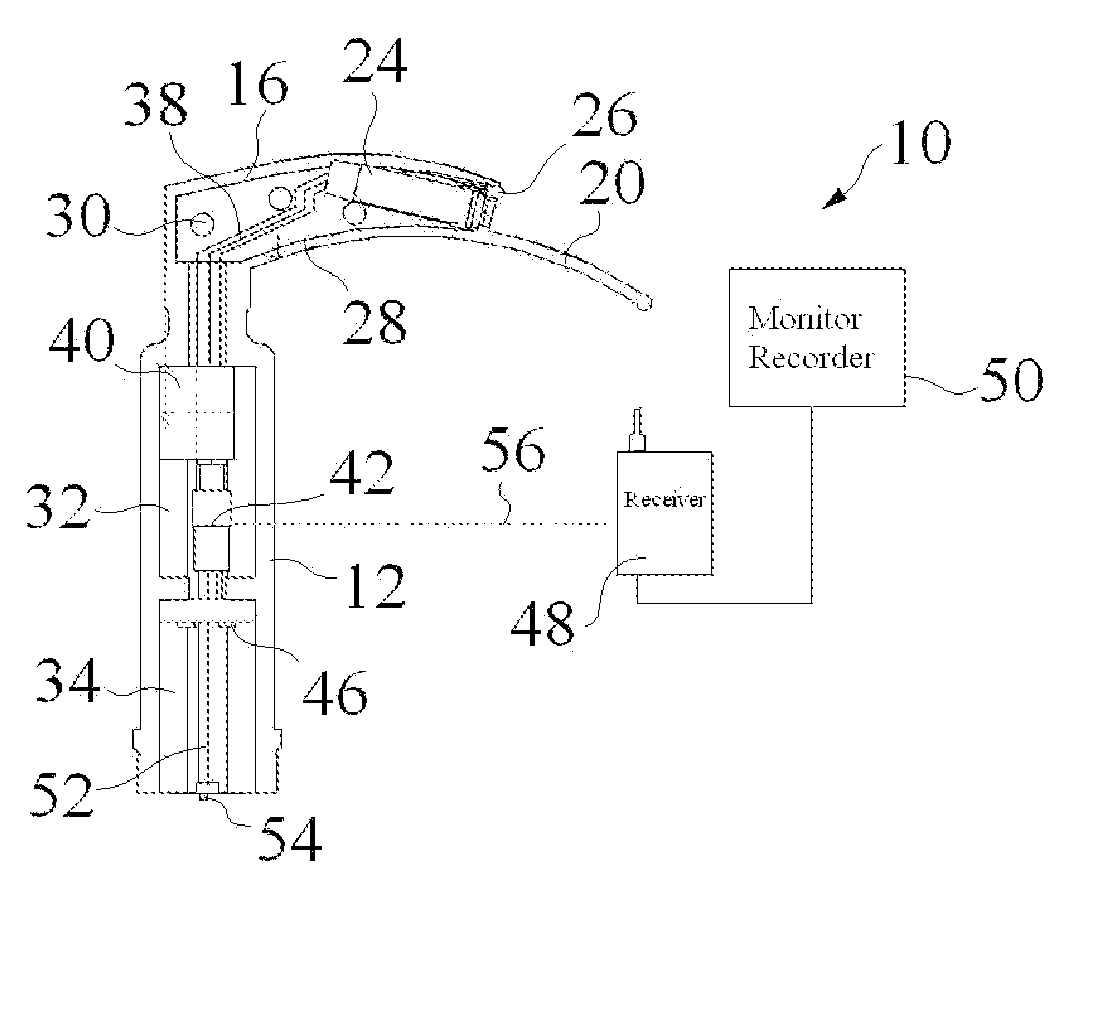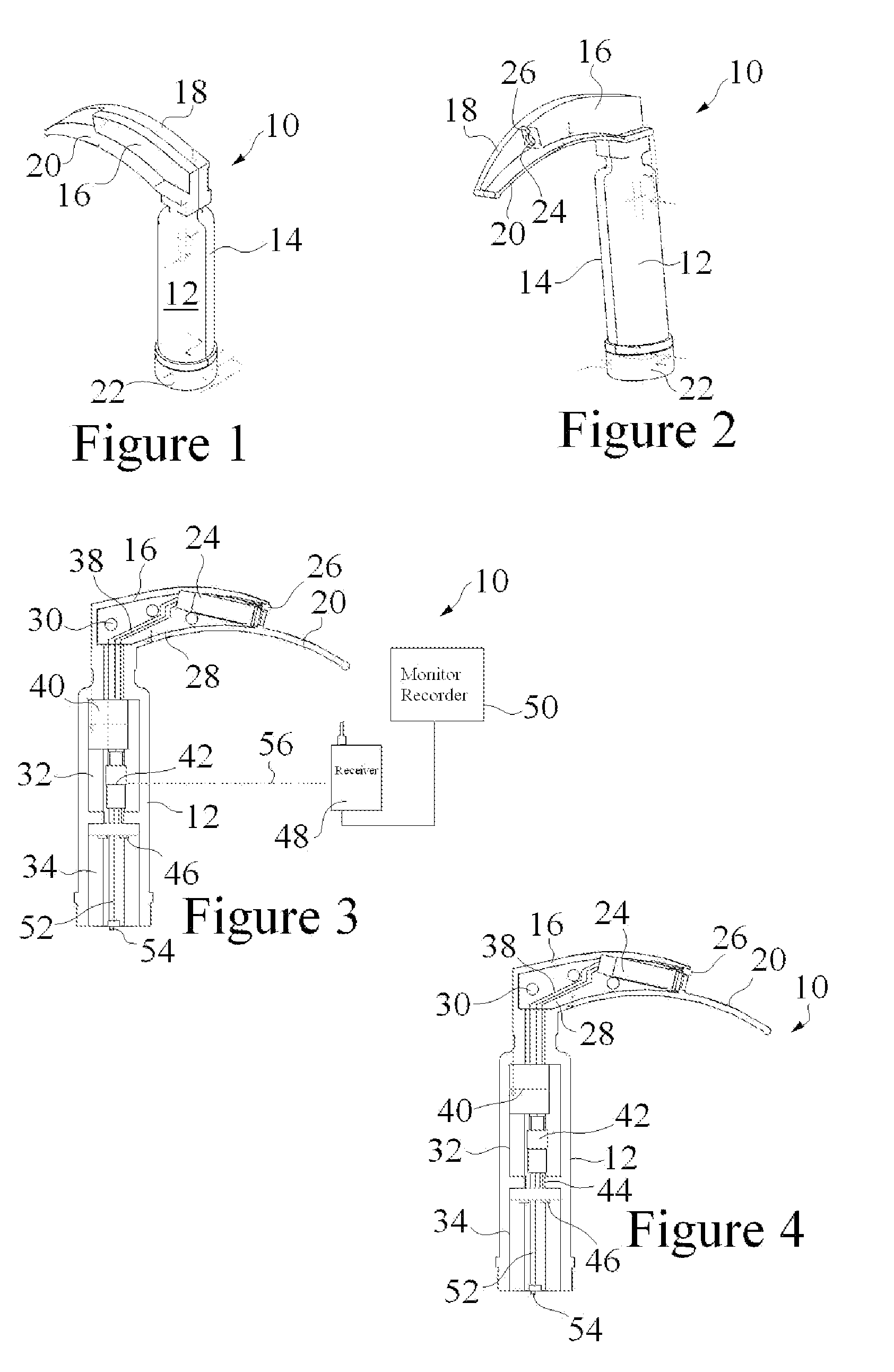Wireless Laryngoscope with Internal Antennae and One Piece Construction Adapted for Laryngoscopy Training
a laryngoscope and antenna technology, applied in the field of wireless laryngoscopes and camera systems, can solve the problems of complicated task for airway managers, bad habits, and inability to facilitate tracheal intubation with indirect laryngoscopy techniques,
- Summary
- Abstract
- Description
- Claims
- Application Information
AI Technical Summary
Benefits of technology
Problems solved by technology
Method used
Image
Examples
Embodiment Construction
[0032]FIGS. 1 and 2 are front perspective views of a wireless laryngoscope 10 according to the present invention. The wireless laryngoscope 10 includes a front or first handle portion 12 and a second or rear handle portion 14 coupled to the first handle portion 12 and defining an internal cavity as described below. The first handle and the second handle portions 12 and 14 combine to form a handle assembly which is intended to conform to the general size and shape of conventional laryngoscope designs. The terms front and rear are merely to differentiate the handle portions 12 and 14 for purposes of explanation only. The handle portions 12 and 14 are made from any conventional material, although injection molded thermoplastic is cost effective, particularly for training purposes. In training purposes the laryngoscope 10 will likely be used on simulators (not shown) such that the laryngoscope need not be sterilized (autoclaving or the like) between uses. Consequently for constructing a...
PUM
 Login to View More
Login to View More Abstract
Description
Claims
Application Information
 Login to View More
Login to View More - R&D
- Intellectual Property
- Life Sciences
- Materials
- Tech Scout
- Unparalleled Data Quality
- Higher Quality Content
- 60% Fewer Hallucinations
Browse by: Latest US Patents, China's latest patents, Technical Efficacy Thesaurus, Application Domain, Technology Topic, Popular Technical Reports.
© 2025 PatSnap. All rights reserved.Legal|Privacy policy|Modern Slavery Act Transparency Statement|Sitemap|About US| Contact US: help@patsnap.com


